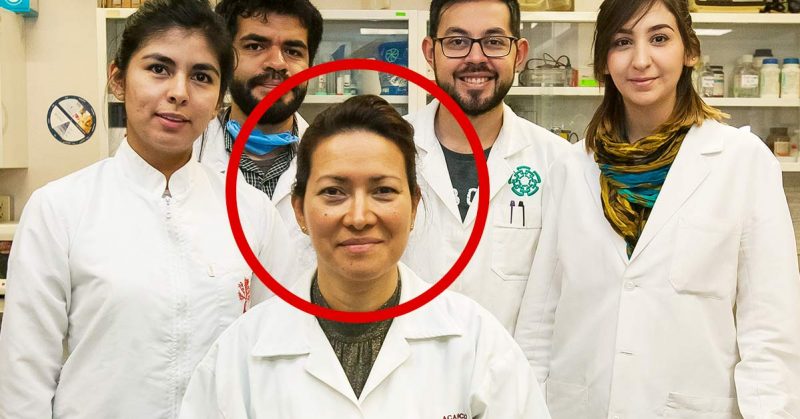This medical breakthrough may finally put an end to cervical cancer among women. After 20 years of research, Eva Ramon Gallegos, a Mexican scientist has developed a promising approach to eliminate the human papillomavirus and in turn, prevent the spread of cervical cancer among women.
There are over 100 variants of HPV, of these at least 14 can cause cervical cancer. While there is currently no cure for HPV, Eva Ramón Gallegos, a researcher from the Mexico National Polytechnic Institute is coming close.
Eva was able to cure 29 patients of the disease using light, and what is known as photodynamic therapy (PDT). PTD treatments utilize light and aminolevulinic acid, a photosensitizer or photosensitizing agent [1]. This technique is not new when it comes to current treatment for certain cancers [1]. What is new however is the investigation into its use for both cervical cancer and treatment for HPV (Human Papillomavirus) [2].
When aminolevulinic acid is applied to cells within the cervix, selected cells become photosensitized and ready to respond to light. An affected area is then irradiated with light, which penetrates the cells in the cervix. As the cells absorb energy from the light, they form highly reactive singlet oxygen, which is highly toxic and kills the problematic cells. Healthy cells, which have not taken up the aminolevulinic acid are not affected by this light, making this a very selective and effective form of therapy [3].
After studying this technique for 20 years, Eva studied its effects on women with HPV infection; women with lesions but without HPV, and women who had HPV and lesions. In this study, 420 patients from Oaxaca and Veracruz, and an additional 29 patients from Mexico City were involved. The treatment was applied three times within an interval of 48 hours, and the results were as follows for the first 420 patients: Women who only had the virus without any lesions or injury, the HPV was 85 percent eliminated; for patients who had HPV with lesions, the HPV was also 85 percent; for those who had lesions without HPV it was 42 percent successful [2].
For the patients in Mexico City, Eva reports that the treatment concentration of photosensitizers was doubled. For these women, the treatment was also performed twice within an interval of 48 hours. Results were as follows: HPV was 100 percent eliminated in patients who carried it without lesions, 64 percent in women with HPV and lesions, and 57 percent in those who had lesions without HPV.
Before applying photodynamic therapy to patients, colposcopy, a pap smear, hybrid capture, polymerase chain reaction and a biopsy were performed to diagnose premalignant lesions and/or the HPV infection. At the end of the treatment, the same studies were repeated and the effectiveness was confirmed [4].
Eva commented that photodynamic therapy is safe and free of side effects. “Unlike other treatments, it only removes damaged cells and does not affect healthy structures. Therefore, it has great potential to reduce the death rate from cervical cancer”. This therapy also has the potential to eliminate other pathogenic bacterial strains. “A percentage of women had infections caused by sexually transmitted chlamydia trachomatis and/or candida albicans, which were 81 and 80 percent eliminated after treatment while the bacterial flora that contributes to the health of the genital tract remained practically intact” [2].
Using photodynamic therapy instead of surgery to remove precancerous tissue is the kind of forward medicine that we need in our world. This simple, non-invasive method of eliminating this virus would represent a significant advance in public health.
It should be noted that at this point, there has only been a press release and summary put forth. The study has not been published or peer-reviewed. However since photodynamic therapy is not new in with respect to cancer treatment, this preliminary evidence looks very promising.
Sources
- Photodynamic Therapy for Cancer – National Cancer Institute (NIH), https://www.cancer.gov/about-cancer/treatment/types/surgery/photodynamic-fact-sheet
- IPN Eliminates Human Papillomavirus, https://www.ipn.mx/CCS/comunicados/ver-comunicado.html?y=2019&n=31
- A Cure For HPV, Using Light. Bravo!, https://www.acsh.org/news/2019/02/12/cure-hpv-using-light-bravo-13801
- Elimina IPN Cien Por Ciento Virus De Papiloma Humano, https://www.repositoriodigital.ipn.mx/bitstream/123456789/25758/1/c-031-papiloma.pdf

